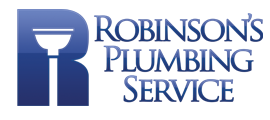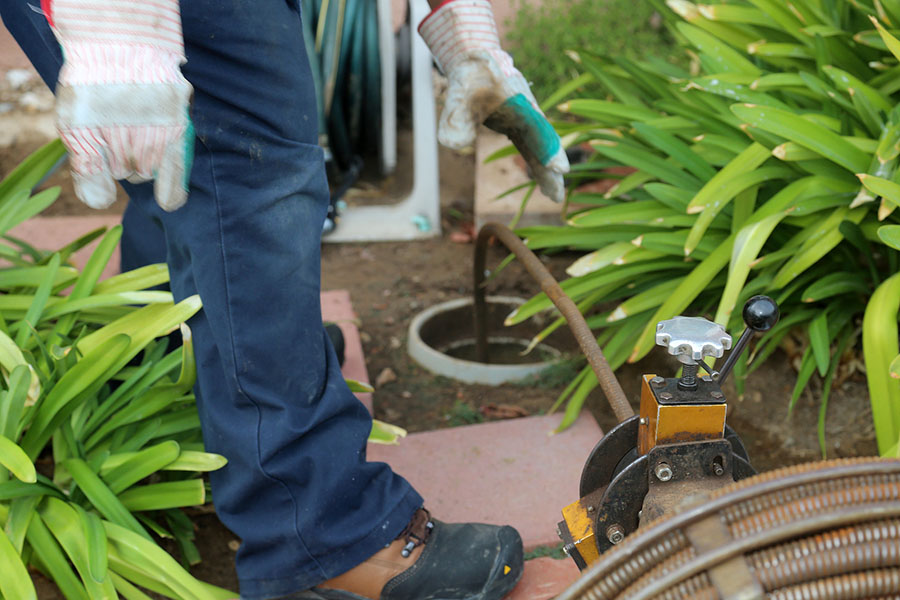If you are looking to repair or replace your sewer line, there are multiple methods including trenched and trenchless sewer repair.
The latter is becoming more common because it requires minimal to no digging, and it is typically faster and more affordable than trenched sewer pipe replacement.
Types of Trenchless Sewer Repair
There are three types of trenchless sewer repair methods, including:
- Pipe bursting
- Slip lining
- Cured-in-place (CIPP) lining, also referred to as epoxy pipelining
The type of trenchless sewer repair you choose will depend on your particular needs and the condition of the pipe.
A plumbing professional can help you understand trenchless sewer repair pros and cons so you can make the most informed decision.
Pipe Bursting
Pipe bursting is completed using a bursting head. Entrance and exit pits are dug using smaller machinery than would be needed for a traditional trenched sewer pipe replacement.
Once the pits are dug, a cable is strung through the existing pipe and a bursting head is attached. The new run of pipe is then attached behind the bursting head. Then, the head and new pipe are pulled through the existing pipe. As the bursting head moves forward, the existing pipe is broken apart and pushed away from the area, and the new pipe is pulled into place.
Pros of Pipe Bursting
- There is minimal digging required when compared to traditional sewer line replacement.
- Your sewer line is completely replaced.
- A larger sewer line can be installed.
- You get the full lifespan of the new pipe.
Cons of Pipe Bursting
- Two pits still need to be dug.
- Making turns within the pipe is not always possible.
- The run of pipe to be replaced must be longer than 15 feet.
- If the existing pipe is improperly graded or completely collapsed, this technique is not recommended.
- The digging can be problematic if one of the pits needs to be inside the home or under a sidewalk or driveway.
Slip Lining
This technique is the oldest form of trenchless sewer repair.
Slip lining involves inserting a new pipe into the old pipe as if it were a liner. Slip liner pipes are usually made out of plastic, like HDPE or PE piping. The diameter of the slip liner is slightly smaller than the original pipe so that it can be threaded through the existing pipe.
This method of trenchless sewer repair can be performed in two ways. A continuous run of pipe can be threaded through an existing pipe or several smaller pipes can be threaded through the sewer pipe and pushed together.
Determining which technique is best involves inspecting your sewer line with a digital plumbing camera. Once the continuous or segmented slip liner is in place, it is grouted in order to add strength and ensure the liner doesn’t move.
Pros of Slip Lining
- It is quick and easy to perform.
- Slip lining is extremely cost-effective.
- Continuous slip lining may be used to bypass the existing line.
- Less digging is required when compared to traditional pipe replacement.
Cons of Slip Lining
- Improper grouting can damage the slip liner.
- The new slip liner has a smaller diameter than the original pipe.
- Two pits are required for this type of sewer line rehabilitation.
Cured-in-Place (CIPP)
Cured-in-place pipelining (CIPP) uses a felt or fiberglass liner soaked in epoxy to rehabilitate sewer line.
This method involves soaking the liner in epoxy and inserting it into the host pipe. Once the liner is in place, it is inflated using a rubber bladder until it presses against the host pipe. After the liner has been inflated, it takes anywhere from 4 to 24 hours to cure, depending on the curing method before service is restored.
Pros of CIPP
- No pits are dug because existing cleanouts can often be used to insert the liner.
- It is extremely cost effective when compared to traditional pipe replacement, as well as replanting grass and landscaping.
- CIPP liners often last as long as new sewer pipes.
- The internal diameter is not dramatically affected.
- This method can be used on any diameter of sewer pipe.
Cons of CIPP
- CIPP can take as long as 24 hours to cure.
- CIPP cannot fix all sewer line problems, like bellying.
- If the pipe has completely collapsed, CIPP is not typically recommended.
- Camera inspections must be performed before and after CIPP in order to make sure the process has been completed correctly.
Understanding Trenchless Sewer Repair Pros and Cons
At Robinson plumbing, we repair, replace and rehabilitate residential and commercial sewer lines, and we can recommend the best sewer line repair technique for your particular situation and budget.
Many of our customers choose trenchless sewer repair due to the pros it offers when it comes to immediate and long-term results.
All that being said, the decision ultimately relies on the amount of damage in your existing sewer line, your budget, and your personal preferences.
And remember, if your sewer line is simply clogged, we can use an auger to clear the line and restore the function of your drains without the need for extensive repair.
Learn more about sewer line repair and replacement


